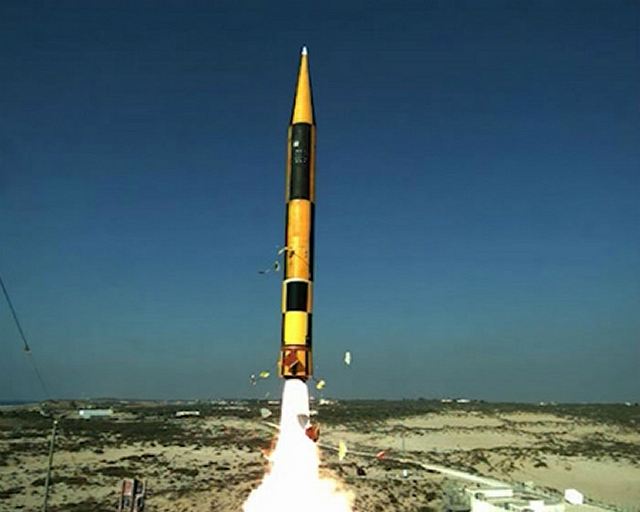Israel
Aerospace Industries (IAI) is ready to conduct the first test of the Arrow
3 missile defense system, the state-owned defense contractor announced
in a statement released Thursday, March 1, 2012, evening. "The initial
trial of the advanced Arrow 3 will be performed in the near future to
confirm the interceptor's effectiveness," Itzhak Kaya, head of the
Arrow Missile Program at IAI, said in a military and aviation exhibition
earlier Thursday near Tel Aviv, according to the statement. |
"A series of different
tests will be run to establish the system's high level of reliability
within a short time," he added.
Kaya said that Arrow 3, which utilizes a radar system named " Green
Pine", is "more capable than ever" to deal with future
threats. In limited tests conducted a few weeks ago, he said, the system
demonstrated improved identification and tracking of incoming missiles
"with high levels of certainty."
Asked whether planned cuts to Israel's defense budget would delay completion
of the system's development and its acquisition by the Israeli military,
Kaya said that the program was "on track, meeting expectations as
a high priority defense system... As far as I know, there is no threat
to the program's future."
The Israel Air Force currently deploys two Arrow 2 batteries, with a third
on the way. Arrow 3, which is slated to comprise the upper tier of Israel's
missile defenses, is scheduled to enter service in 2015.
A top Israeli missile defense expert recently echoed Kaya's assurance
regarding Arrow 3, saying that the system is capable of protecting Israeli
territory from an Iranian long-range missile barrage.
"There is no such thing as 100 percent defense, but the Arrow is
capable of providing adequate defense against Iran's Shahab and Sajil
ballistic missiles," Arieh Herzog, who recently stepped down as director
of the Defense Ministry's Homa Missile Defense Agency (HMDA), told The
Jerusalem Post.
"The Iranians have the ability to launch barrages and that is an
important part of their capabilities, but we are prepared and have the
ability to intercept those barrages," Herzog said.
Other former and current defense officials have also voiced confidence
in the Arrow system.
"It was developed to deal with missiles fired from distances of more
than 1,000 km," Uzi Rubin, the Arrow's chief developer and head of
the HMDA between 1991 and 1999, told Xinhua Thursday.
He noted, however, that rockets from Syria posed a more imminent threat
than those from Iran due to the former's proximity to Israel's northern
border.
IAI's announcement and the officials' remarks came amid a media buzz in
recent months that Israel is planning to launch a pre- emptive strike
on Iran's nuclear facilities. Israeli military planners predicate that
such a strike would probably prompt Tehran, as well as the Lebanon-based
Hezbollah and Palestinian militants in Gaza, to fire missile salvos on
Israel's strategic sites and urban centers.
Though Arrow 3 is being developed with Israel's security in mind, there
has been talk of selling the system to foreign clients.
While an export deal has not yet been negotiated, Kaya of IAI said he
was certain that the system could "meet the needs of various countries
and become a key element in their defense programs."
|



























